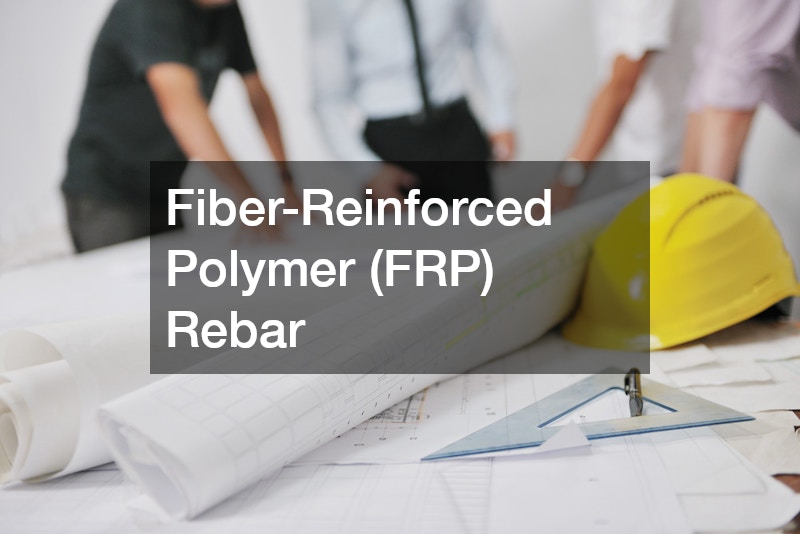Reinforcement bars, commonly known as rebar, are integral to the durability and strength of modern construction. This article explores the different types of rebar products and their applications in today’s building projects. Understanding these various forms of rebar allows construction professionals to choose the right type that matches their specific needs and environmental considerations.
The Different Types of Rebar
Carbon Steel Rebar
Carbon steel rebar is the most traditional and widely used type in the construction industry. It is known for its excellent tensile strength, making it highly effective in supporting concrete structures. Typically used in building roads, bridges, and high-rise buildings, carbon steel rebar reinforces concrete by providing it with tension capacity that it lacks inherently.
Despite being effective, the primary drawback of carbon steel rebar is its susceptibility to corrosion. In areas exposed to moisture or corrosive elements, it can deteriorate quickly, leading to structural weaknesses over time. Engineers often address this limitation by incorporating additional protective measures, such as coatings or treatments, to extend the lifespan of constructions using carbon steel rebar.
Carbon steel rebar is often chosen for its reliability and cost-effectiveness. Its availability and ease of production further contribute to its widespread use. The global demand for carbon steel rebar continues due to its versatility and practicality in various building projects.
Stainless Steel Rebar
Stainless steel rebar offers superior resistance to corrosion, which is crucial for projects in marine environments or areas with high humidity. This type of rebar is significantly more expensive than carbon steel, but its longevity and low maintenance costs often justify the initial investment. Stainless steel rebar is commonly used in applications where long-term durability is paramount, such as wastewater treatment facilities and coastal structures.
The unique composition of stainless steel rebar includes chromium, which forms a passive layer of chromium oxide. This layer acts as a protective barrier that prevents corrosion and reduces the need for additional treatments or coatings. Many modern constructions benefit from the reduced life-cycle costs associated with stainless steel rebar, as well as its ability to maintain structural integrity over extensive periods.
In addition to its corrosion-resistant properties, stainless steel rebar is also favored for its ability to withstand high-temperature environments. Its enhanced mechanical properties make it suitable for use in critical infrastructures, including hospitals and research facilities, where consistent performance is non-negotiable. By incorporating stainless steel rebar, engineers can design structures that stand up to time and environmental challenges.
How Rebar is Used in Construction Projects
Building Foundations
Rebar plays a pivotal role in reinforcing concrete foundations, enhancing their load-bearing capabilities. By distributing stresses evenly, rebar helps to prevent cracking and subsequent structural failure. In essence, rebar provides the essential support needed for concrete foundations to hold up against various forces and pressures encountered during a building’s lifetime.
The integration of rebar within foundations is crucial, especially in high-seismic zones where ground movement is a concern. It ensures that the building can absorb and dissipate energy, mitigating the risk of collapse during an earthquake. Construction teams often employ rebar in intricate patterns tailored to the specific load requirements of the foundation.
Concrete Slabs and Walls
Rebar is equally important in the structural integrity of concrete slabs and walls. For high-rise buildings, rebar reinforces the concrete, allowing it to bear substantial vertical loads. It also contributes to resistance against lateral forces caused by wind or seismic activities, thereby maintaining stability and safety.
In the case of concrete walls, rebar serves to counteract the inherent brittleness of concrete, providing flexibility and additional tensile strength. This is particularly important in basement walls, retaining walls, and load-bearing walls, where structural failure could lead to severe consequences. The placement and spacing of rebar in these applications are meticulously planned to meet specific design criteria and regulatory standards.
The Modern Innovations in Rebar
Epoxy-Coated Rebar
Epoxy-coated rebar represents a significant advancement in protecting steel from corrosion. The epoxy coating acts as a barrier, insulating the steel from environmental factors that promote rust. This innovation is particularly beneficial in harsh environments where exposure to de-icing salts or seawater is common.
The application of epoxy-coated rebar can extend the lifespan of a structure significantly by mitigating the most common mode of rebar deterioration—corrosion. Although the initial investment is higher, the reduced maintenance costs and prolonged durability often result in overall savings over time. This makes epoxy-coated rebar a worthwhile consideration for bridges, parking structures, and other exposed infrastructures.
Fiber-Reinforced Polymer (FRP) Rebar
Fiber-reinforced polymer (FRP) rebar is an emerging alternative to traditional steel rebar. Made from a composite of fibers and resin, FRP rebar offers a lightweight and non-corrosive solution for modern construction needs. It is increasingly used in environments where steel rebar would be prone to rapid degradation, such as aquatic facilities and chemical plants.
Unlike traditional rebar, FRP does not conduct electricity or heat, making it ideal for structures requiring electromagnetic transparency and thermal insulation. Moreover, its corrosion resistance enhances its viability in aggressive environments, reducing the need for expensive maintenance. As a result, applicable projects can save significant time and resources by employing FRP rebar.
The choice of rebar influences the longevity and robustness of construction projects. By understanding the different types and their specialized uses, builders can enhance the safety, efficiency, and resilience of their structures. From traditional carbon steel to innovative FRP rebar, each material offers unique benefits suited to particular environmental and structural demands.



